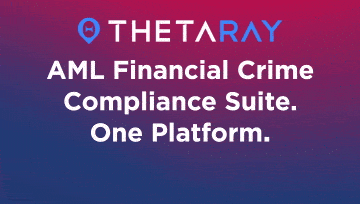News
Takedown of Cryptocurrency Mixer a Hard Blow for Money Launderers
A dark web firm that enabled users to mask their ownership of licit and illicit bitcoins, litecoins and other cryptocurrencies by blending them together and swapping them has been taken offline almost a year to the day since its launch, Europol disclosed Wednesday.
Bestmixer.io, which rapidly became one of the three most popular cryptocurrency mixers worldwide, was dismantled by the Dutch Fiscal Information and Investigation Service, or FIOD, Europol and other European authorities on May 22, marking an end to a website that openly advertised the avoidance of due diligence as reason to use its services.
The service jumbled approximately $200 million in bitcoins during its 12-month lifespan, and raked in an estimated $600,000 in profits each month by charging a commission of 1 to 2 percent, according to FIOD, which began investigating the firm days after its launch pursuant to a tip from the McAfee, a cybersecurity firm in California.
Services like Bestmixer have experienced a spike in user traffic amid increased awareness that bitcoins and other popular cryptocurrencies predicated on blockchain technology do not completely shield their users from detection.
Criminals sometimes use mixers to manipulate transactional records on the public blockchain and add an additional layer of confidentiality before exchanging their cryptocurrency for government-issued banknotes, John Fokker, head of cyber-investigations for McAfee Advanced Threat Research in Amsterdam, told ACAMS moneylaundering.com.
“By breaking larger sums into smaller ones and mixing funds from various sources, they can obfuscate the exact origin,” Fokker said.
Proponents of Bestmixer, including the author of a Dec. 18, 2018 review published by TotalBitcoin, claimed that the service exceeded those of its competitors by eliminating any chance that users would receive their old cryptocurrency after sending it through the mixer.
“They act as a kind of compensation chamber—you can see what comes in and what goes out, but only the mixer itself knows the correspondence between the ins and outs,” said Aurelien Vuilleumier, a consultant with Swiss digital risk firm Heptagone. “This allows a user to get coins that are not linked to those he sent in.”
The formal financial system
The investigation into Bestmixer did not involve financial institutions, though some of the value that passed through the website in cryptocurrency may have crossed paths with banks following its conversion to government currency, FIOD spokesman Adriaan Ros told moneylaundering.com.
Financial institutions may still play a role in advancing future investigations stemming from the shutdown of Bestmixer, given that the company’s servers in Luxembourg and the Netherlands are now in the possession of Dutch and European authorities.
The data they contain includes IP addresses, transactional details, bitcoin addresses and chat messages.
“Their best move would be to trace coins going out of the mixer to the point where they were cashed out through exchanges—ideally the ones in cooperative jurisdictions and with proper KYC [know-your-customer] standards—and ask for copies of identification documents of their incriminated users,” Vuilleumier said.
Most of Bestmixer’s clients hail from Luxembourg, the Netherlands and the United States, according to FIOD.
Even if Bestmixer’s administrators deleted their personal and transactional data, investigators still have a chance to rebuild the links between their specific inflows and outflows of cryptocurrency. Financial institutions can expect to be approached at that point, though authorities expect diminishing returns on the help they can offer.
“We anticipate that the use of other coins with greater privacy will slowly replace the need for dedicated mixing services,” Europol concluded in an annual report last year.
Contact Gabriel Vedrenne at gvedrenne@acams.org
| Topics : | Anti-money laundering , Cryptocurrencies , Info. Security/Cybercrime |
|---|---|
| Source: | European Union , Netherlands |
| Document Date: | May 23, 2019 |

